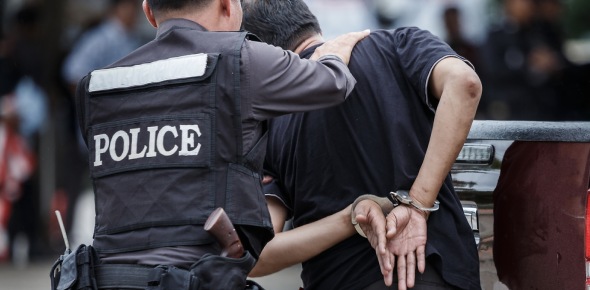A ______ is the lawful, temprorary detendtion of an individual in a...
A _____ is a limitation placed on a driver.
____ is a less numerous segment of a population that differs from the...
True or False: It is Florida law to have your driver's license on your...
True or False: Signing a Uniform Traffic Citation is not an admission...
______ is the general speed and direction of vehicle or pedestrian...
Which of the following is NOT a criminal traffic violation?
A _____ is a special authorization printed on a Florida Driver License...
Which of the following can diffuse tension at a traffic stop?
The most common way to "communicate the stop to the violator" is to...
When conducting a traffic stop with 2 officers, the secondary...
Which Amendment guarantees every perso nwithin the US equal protection...
_____ are alternating flashes of the vehicle lights, strobe, flashers,...
Which Supreme Court case states that no State can limit a person's...
Which of the following is NOT a major consideration when picking a...
The main purposes of takedown lights is to....1. Prevent the operator...
Calling the violator back to the patrol car is known as the _______
The 2nd part (BLUE) is....
When a violator refuses to sign a Uniform Traffic Citation....
The main difference between a moving violation and a non-moving...
A license that belongs to somebody under 21 years of age....
If the violator signs with an "X", the officer should.....
The first thing an officer should do when interviewing the violator...
In regards to a Uniform Traffic Citation, if the violator does not...
If an officer is alone and is faced with a potential "high risk...
Officer-driver interaction begins.....
_____ is the unequal treatment of any person
When does a traffic stop begin?
An infraction is known as a.......
An infraction is classified as ________ or _________.
Which of the following is a non-moving violation?
Licenses that have a blue color header belong to classes.....
The Florida Uniform Traffic Citation is comprised of ____ parts.
The 4th part (PINK) is.......
There are 4 current versions of the Florida Driver License. A license...
The 3 main components of "LTD" are.....
The first part (WHITE) is........
The _______ decriminalizes most traffic violations.
A person who has a _______ license is permitted to transport hazardous...
The second step in initiating a traffic stop is....
On a traffic stop, the minimum distance between the officer's vehicle...
True or False: A regular Uniform Traffic Citation can be issued if the...
There are 3 factors when determining whether or not to stop a vehicle....
The first step in initiating a traffic stop is....
A ____ ignition is where the plastic piece under the steering column...
Persons who are able to drive straight trucks weighing 26,001 LBS or...
If an officer willfully subjects any person to the...
Chapter ____, Florida Statutes, deals with Motor Vehicle Licenses and...
A traffic stop occurs on the left side of the roadway. Which of the...
If an officer arrests a violator on an unknown risk traffic stop, who...
















